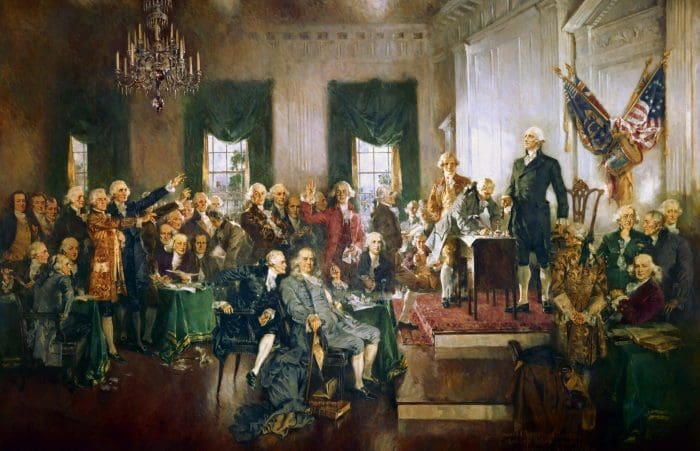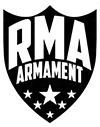Chevron Deference is dead. Long live the US Constitution. Right on the heels of Bruen, the Supreme Court of the United States today issued one of the most important opinions in the last 100 years with huge implications for our Second Amendment rights.

Together, the Bruen and Loper opinions have built a strong judicial foundation around the Second Amendment. Laws and rules infringing on the Second Amendment will continue. But today, we have a very strong defense against the government’s nonsense infringements being taken seriously by courts. The tyrants are now playing defense, and they’re losing.
SCOTUS Kills Chevron Deference
Loper Bright Enterprises v. Raimondo just fixed American court review for a wide array of issues. Back in 1984, SCOTUS heard a case named, Chevron v. The Natural Resources Defense Council. In their erroneous majority opinion, the Supreme Court invented an enormous new hurdle for the American people to defend themselves from illegal executive branch action.
Under the US Constitution, law-making is strictly the purview of Congress. However over the past 40 years, executive agencies such as EPA, ATF, and many others have unilaterally written and enforced a wide array of unauthorized ‘rules’ that function as law in practice. For example, the recent ATF Pistol Brace and Bump Stock rules were never passed by Congress. They were imposed upon the American people exclusively by the ATF without any authorization to do so from Congress. The ATF simply authorized themselves to criminally prosecute individual people for federal felony charges by doing Olympic-level mental gymnastics to bring bump stocks, pistol braces, forced reset triggers, and more under the purview of existing federal law when they clearly are not by the black letter of Congress. By just publishing their own internal enforcement preferences into the federal register, ATF bypassed Congress entirely and wrote new federal laws on their own.
Congress’ intent in allowing executive agencies to create more specific rules was seemingly well-thought out at the time. After all, the staffers at these agencies are presumed to be subject matter experts in the mechanics of firearms, biological scientists that understand the environment, and more. SMEs are surely better-qualified to author the specific details of federal law than elected legislators. But all it took was installing a few partisan apparatchiks by zealous or lazy Presidents into executive agencies to write insane rules that went against the Constitution and the will of Congress.
They were able to do so with a high level of judicial protection because of Chevron.
The key element the administrative state gained from Chevron is what is known as Chevron Deference. Chevron Deference is a judicial policy invented by SCOTUS that since 1984 has instructed US courts to prima facie assume the legitimate constitutionality of any administrative rulemaking by executive agencies like ATF, EPA, etc. These agencies have used rulemaking as a law enforcement cudgel for political policy desires beyond what has been legitimately authorized by a vote of Congress. Challenging administrative rules such as Bump Stocks and Braces has required an extraordinarily high bar of evidence that the promulgating agency acted outside their authority granted by Congress. It’s been such a high bar that many rules have been allowed to stand despite clear and convincing evidence to the contrary–even actual federal law passed by Congress that explicitly spells out the opposite. A rain puddle is literally not a navigable waterway.

What is Chevron Deference?
You’ll have to imagine two children in a classroom. One is just hitting the other over and over again. Chevron Deference is the principal telling the teacher they’re not allowed to intervene even though everyone is watching this kid break the rules with wanton violence. Chevron allows the bully to write their own laws and rules without being subjected to any real form of control or consequence.
Because of Chevron Deference, unelected bureaucrats in administrative agencies of the executive branch have enjoyed wide latitude to write their own laws. Rules like those banning Bump Stocks, Pistol Braces, and Forced Reset Triggers, for example. These things were never illegal until the ATF just made up that they were on direct contravention to duly passed federal law. In a very real sense, Chevron Deference turned our legacy of constitutional English common law practice on its head. The President and his cronies could unilaterally dictate a wide variety of prohibitions under penalty of law. It would take an act of Congress with extreme specificity to undo the executive action or a court striking down their action as unconstitutional.
Chevron Deference fundamentally stripped the judicial branch of their Constitutional authority to review such matters by subjecting their review process to a built-in advantage for the government and against the people. It also allowed Congress to ignore their duty to write proper laws for the nation. Instead, Congress had illegally abdicated this duty to the President and the executive branch to avoid responsibility for poor laws and poor outcomes.
But thanks to an obscure case involving a fishing vessel being forced to provide pay and quarter for environmental regulators on board their vessel, the 2nd Amendment has gotten even stronger today.
What the end of Chevron really means is that Congress will be forced to write laws in a much more specific way. For decades. Congress has functionally abdicated their lawmaking duty and allowed the executive branch to run wild. Every administration uses rulemaking to impose a wide array of policy changes on environmental, communications, firearms, and other issues. The lurch from left to right every 4 to 8 years has caused a lot of problems for people and businesses in those arenas.
What did SCOTUS just do?
The Supreme Court ended the judicial practice in lower courts of the presumption of Constitutionality of every federal rule. Now, legal challenges through the US court system against federal executive administrative rulemaking are no longer subject to the presumption of constitutionality in favor of the government.
It’s akin to the change in Second Amendment litigation before and after Bruen. Before Bruen, there were three judicial “tests” for litigating against gun control laws. Judges would apply “Rational Basis,” “Intermediate Scrutiny,” or “Strict Scrutiny” tests in order to figure out whether to uphold a law or not.
Pre-Bruen Scrutiny Tests
Rational basis gives the biggest advantage to the government by essentially allowing the judge to shrug their shoulders at petitioners and allow any vague semblance of government interest claims to suffice for total infringement, such as the stated interest of minimizing violent crime.
Intermediate Scrutiny is supposed to function as a 50/50 interest balancing test, but in reality functioned as Rational Basis. At the time, Strict Scrutiny was the dream.
Strict Scrutiny is effectively derived from Murdock v. Pennsylvania which calls for any infringement upon an enumerated right to be tailored as narrowly as possible for the desired outcome. Think of it as not allowing the idiotic aesthetic bans of so-called, “assault weapons,” but perhaps maybe allowing magazine bans since it could theoretically have an effect on the ability of someone to carry out a particularly circumstanced hypothetical violent crime, whereas an adjustable stock has no discernable or demonstrable utilitarian effect on such a thing.
These interest-balancing tests allowed judges to wave away petitioners claims of infringement upon their Second Amendment rights by positing that the government was within their rights to prohibit and regulate different things because of the general existence of crime. At each level, however, the government would never be required to prove efficacy at all. They were free to go wild and ban whatever they wanted without having to prove that it even had the stated outcome they used to justify doing it. It was a wild time with crazy nonsense laws. SCOTUS finally saw fit to rein in the madness.
The End of Interest-Balancing
Justice Thomas correctly pointed out in Bruen that the Second Amendment was the interest-balancing test in and of itself in order to ratify the constitution. Simply put, the federal government has a blanket prohibition against virtually all gun control because of the inherent risk of tyranny. This anti-federalist measure was one of the most pointed enumerated rights and was required in order to discard the Articles of Confederation and ratify the modern US Constitution.
The Anti-Federalists knew that even though it was obvious to everyone at the time, there would come a time in the future when government officials would seek to extend their powers beyond those delegated by the Constitution. They would twist the words so they could make up anything they wanted. And thus, they have. The Federalists thought the Bill of Rights was redundant because everyone understood that the enumerated powers didn’t include the ability to regulate firearms in any way. They were wrong.
Post-Bruen, Post-Chevron
Bruen went a step further and forced the government to argue against the plain text of the Constitution regardless of the tailoring or intended outcomes. This is the correct legal and moral approach to rights litigation. Today, the death of Chevron brings the judicial and executive branches back in line with the proper Constitutional separation of powers by ending the judicial presumption of Constitutionality in federal executive branch administrative rulemaking. Federal administrative rules will be reviewed with much higher judicial scrutiny in court challenges, and agencies will now have to contend with the actual black ink will of Congress in court. They can’t pull the, “because I said so,” card anymore.
Together, the Bruen and Loper opinions have built a strong judicial foundation around the Second Amendment. Laws and rules infringing on the Second Amendment will continue. But today, we have a very strong defense against the government’s nonsense infringements being taken seriously by courts. The tyrants are now playing defense, and they’re losing.

Conclusion
The end of the Chevron Deference judicial doctrine does not put an end to administrative rulemaking. Administrative agencies will still engage in fiat rulemaking. But it will be far more difficult for them to test the far reaches of Congressional authorization with insane novel legal interpretations that are clearly unconstitutional. What the end of Chevron actually does is instruct judges nationwide that they are not to apply a presumption of Constitutionality to federal rulemaking, creating a level playing field for litigation against these rules.
Crazy rules such as Navigable Waterways, Bump Stocks, Pistol Braces, and Forced Reset Triggers become much more difficult to create and enforce without Chevron giving them blanket protection in court. Without the judge in every case being forced by SCOTUS to simply assume that anything they do is legal under Chevron Deference, the American people stand a real fighting chance of rolling back the tyrannical administrative state. And, Congress will be forced to do their jobs and be held to account for the the textual details of their legislative intentions instead of pointing at the President. The end of Chevron Deference is an enormous roadblock for tyranny and a great step forward for correcting the abuse and corruption in our federal government.
What’s Next?
Today, you’ll see a lot of people bemoaning the idea that they can’t just unilaterally do whatever they want under colour of federal law without congressional approval. It’s another great day for human liberty, but the fight isn’t over.
Let’s hope that this court has the fortitude and the opportunity to take out the next most egregious (and easy) target: Wickard v. Filburn.







